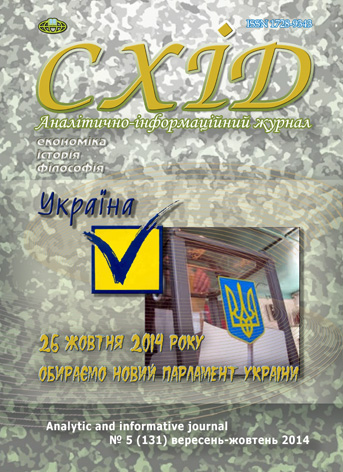The formation models logistics management systems product distribution company
DOI:
https://doi.org/10.21847/1728-9343.2014.5(131).29095Keywords:
management, model, logistics, distribution system, sales, consumer, the mediatorAbstract
In the article describes the peculiarities of the management of the logistics systems, levels of logistic management. Formed scheme logistics-grid companies on the basis of different distribution channels and options sales - the sale of goods by the manufacturer (direct sales) and sales of goods intermediaries. The proposed direction (stages) management of the logistics system of the distribution system associated with the use of the individual management functions. Built client-oriented model of the formation of logistic system of goods, when the orientation of the logistics structure and the system of goods is oriented directly to the consumer and the distributor of goods.
Downloads
References
Alesinskaya T. V. (2005), Fundamentals of logistics. Common issues of logistic management, Taganrog, 121 p. (rus).
Blank I. A. (1999), Financial management fundamentals, Kiev, 512 p. (rus).
Dzhaferova S. E. (2005), Logistic sales modeling in the company resource planning system, Culture of the Black Sea Peoples, No. 62, pp. 27-30 (rus).
Dymarchuk S. M. (2000), Logistic Management System and its Correlation with the Company’s Strategy, Bulletin of «Lviv Polytechnic», No. 390, pp. 20-22 (ukr).
Yeletenko O. (2008), The company’s logistic system management mechanism, Bulletin of «Lviv Polytechnic», No. 628, pp. 494-498 (ukr).
Zahorna T. O., Tkachova A. V. (2009), Risk management in the Company’s Logistic System, Crimean Economics Scientific and Practical Journal, No. 27, pp. 89-93 (ukr).
Kardanova L. I. (2002), Marketing: manufacturer’s market behavior strategy, Rostov-on-Don, 216 p. (rus).
Kolesnikov S. The links of the supply chain gain addition profit, available at: http://www.osp.ru/cio/2003/09/172835/ (rus).
Konishcheva N. I., Trushkina N. V. (2011), Areas of improvement of managing logistics activities of the industrial companies, Economics, Management, Innovations, No. 2, available at: http://nbuv.gov.ua/j-pdf/eui_2011_2_21.pdf (ukr).
Kotler F., Armstrong G., Sonders D. (2000), The Fundamentals of Marketing, Williams Publishing House, Moscow, 944 p. (rus).
Larina R. R. (2003), Determination of Logistics Potential of the Industrial Enterprise, Bulletin of «Lviv Polytechnic», No. 472, pp. 470-475 (ukr).
On the resource provision of the agriculture on the basis of logistics and marketing, available at: http://www.logistics.ru/9/2/i20_33592p0.htm (rus).
The main concepts and definition of logistics, Available at: http://www.litsoch.ru/referats/read/201375/ (rus).
Selezniova N. O. (2012), The use of logistic concept when managing the company’s material flow, Marketing and Management of Innovations, No. 2, pp. 157-165, available at: http://nbuv.gov.ua/j-pdf/Mimi_2012_2_19.pdf (ukr).
Structure and types of distribution channels, available at: http://www.grandars.ru/student/marketing/kanaly-raspredeleniya.html (rus).
Frolova L. V. (2005), The mechanisms of logistic management of the mercantile business, Donetsk, 322 p. (ukr).
Shevchun M. B. (2013), The specifics of managing the logistics processes of the mercantile business, Sustainable Economic Development, No. 3, pp. 353-356, available at: http://nbuv.gov.ua/j-pdf/sre_2013_3_77.pdf (ukr).
McKenna R. (1991), Marketing is everything, Harvard Business Review, January/February, No. 69, pp. 65-84 (engl).
Downloads
Published
How to Cite
Issue
Section
License
Copyright (c) 2014 Ihor Palchyk

This work is licensed under a Creative Commons Attribution-NonCommercial-NoDerivatives 4.0 International License.
1. Authors bear responsibility for the accuracy of facts, quotations, numbers and names used.
2. Manuscripts are not sent back.
3. The publisher does not always agree with the authors' opinion.
4. The authors reserve the right to authorship of the work and pass the first publication right of this work to the journal under the terms of a Creative Commons Attribution-NonCommercial-NoDerivatives 4.0 International License. This license allows others to distribute (copy) the published work for non-commercial purposes, provided there is mandatory attribution to its authors and a link to the first publication in our journal.
5. The authors have the right to conclude separate supplement agreements that relate to non-exclusive work distribution in the form in which it has been published by the journal (for example, to upload the work to the online storage of the journal or publish it as part of a monograph), provided that the reference to the first publication of the work in this journal is included.

